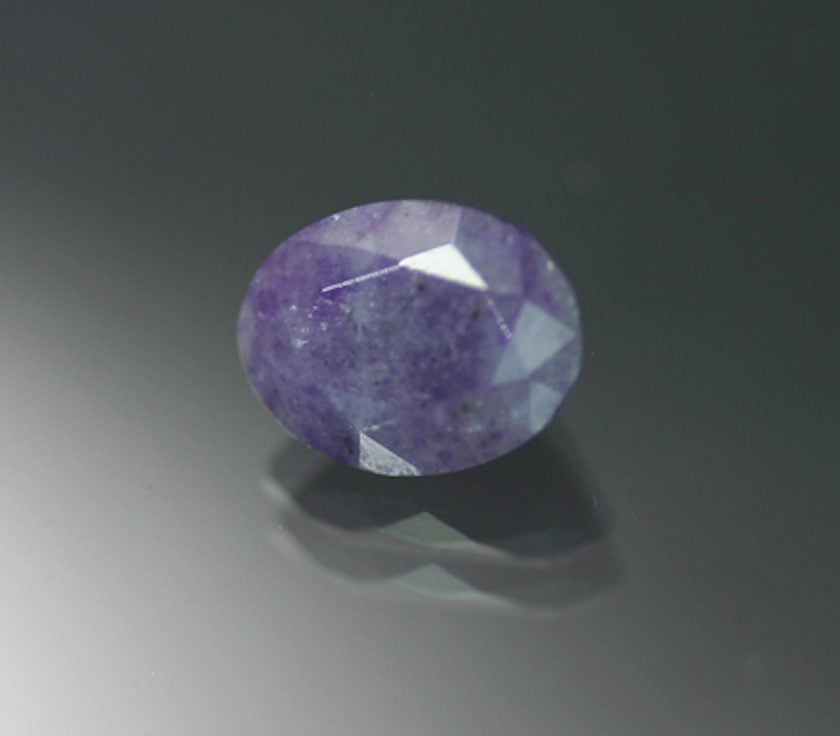Spurrite Value, Price, and Jewelry Information
An attractive but uncommon mineral, spurrite has seldom been cut as a gemstone. However, it has the hardness and tenacity to be used for cabochons.
2 Minute Read
An attractive but uncommon mineral, spurrite has seldom been cut as a gemstone. However, it has the hardness and tenacity to be used for cabochons.
Start an IGS Membership today
for full access to our price guide (updated monthly).Spurrite Value
What is Spurrite?
In 1986, polished slabs of spurrite as well as rough material appeared in substantial quantities at a mineral show. This translucent to opaque material from Mexico had medium to dark purple colors. Since then, other sources have been discovered, but the material is still rarely encountered in the gem trade.
Does Spurrite Make a Good Jewelry Stone?
You're more likely to find a spurrite in a mineral collection, if at all, than a jewelry collection. With a hardness of 5 and distinct cleavage, any cut spurrites should receive protective settings in rings. Other jewelry use, such as necklaces or brooches, should pose no exceptional risks to these stones.
Faceted spurrites are extremely rare. The few pieces lapidaries do work usually become cabs, beads, and decorative items.
What is Paraspurrite?
Some older gemological reference materials identify paraspurrite as a polymorph of spurrite. However, in 2010, the International Mineralogical Association (IMA) Commission on New Minerals, Nomenclature, and Classification (CNMNC) discredited paraspurrite as a species. Any materials identified as paraspurrites are spurrites.
Identifying Characteristics
When tested in gem labs, spurrites have shown some variation in their fluorescence. Some stones have shown green cathodoluminescence under a beam of electrons as well as green luminescence under shortwave (SW) ultraviolet (UV) light.
Others spurrites have shown different results. In 2004, the GIA tested a specimen that proved inert under SW UV but showed light blue luminescence under longwave (LW) UV. Other specimens examined showed pinkish-orange and orange cathodoluminescence. Since these specimens were aggregate minerals, the researchers speculated that some of the components in the specimens could have affected their cathodoluminescence.
Are There Synthetic Spurrites?
Scientists have synthesized spurrites for research purposes, but there's no known jewelry use for this lab-made material. There are no known treatments for these gemstones.
Where are Spurrites Found?
The best known sources for gem material are the Velardeña mining district, Durango, Mexico and Okayama Prefecture, Japan.
Other notable sources include the following:
- United States: Crestmore, California; Luna County, Tres Hermanas, New Mexico.
- United Kingdom: Scawt Hill, County Antrim, Northern Ireland; Scotland.
- Israel; New Zealand; Russia; Turkey.
How to Care for Spurrite Gemstones
Resist the temptation to just wipe dust and grit off these gems or decorative objects. Spurrites have a lower hardness than household dust (7), which will scratch them. Wash these pieces with a soft brush, mild detergent, and warm water.
For more recommendations, consult our gemstone jewelry care guide.
Joel E. Arem, Ph.D., FGA
Dr. Joel E. Arem has more than 60 years of experience in the world of gems and minerals. After obtaining his Ph.D. in Mineralogy from Harvard University, he has published numerous books that are still among the most widely used references and guidebooks on crystals, gems and minerals in the world.
Co-founder and President of numerous organizations, Dr. Arem has enjoyed a lifelong career in mineralogy and gemology. He has been a Smithsonian scientist and Curator, a consultant to many well-known companies and institutions, and a prolific author and speaker. Although his main activities have been as a gem cutter and dealer, his focus has always been education. joelarem.com
International Gem Society
Related Articles
Black Diamond Value, Price, and Jewelry Information
Chameleon Diamond Value, Price, and Jewelry Information
Gray Diamond Value, Price, and Jewelry Information
Green Diamond Value, Price, and Jewelry Information
Latest Articles
Amethyst Sources Around the World: The Geological Story Behind These Purple Gemstones
Brazilianite Value, Price, and Jewelry Information
Ruby-Glass Composites vs Leaded Glass Clarity Enhancements
Morganite Buying Guide
Never Stop Learning
When you join the IGS community, you get trusted diamond & gemstone information when you need it.
Get Gemology Insights
Get started with the International Gem Society’s free guide to gemstone identification. Join our weekly newsletter & get a free copy of the Gem ID Checklist!
